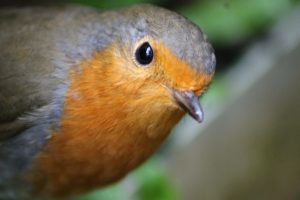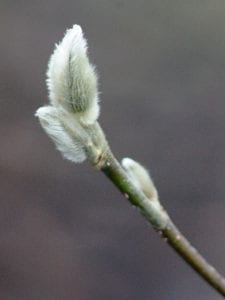By Andy Winfield
 I’m currently reading Braiding Sweetgrass for the second time, this time as an audiobook. For those that haven’t read it, it’s a series of essays and memories from Robin Wall Kimmerer; an academic and botanist of Native American heritage. She says of the book, “I wanted readers to understand that Indigenous knowledge and Western science are both powerful ways of knowing, and that by using them together we can imagine a more just and joyful relationship with the Earth”. Reading this book makes me feel very happy; it taps into something that is lost but was so important to humans for thousands of years all over the world, a connection to the seasonal changes, the life around us, and a respectful coexistence.
I’m currently reading Braiding Sweetgrass for the second time, this time as an audiobook. For those that haven’t read it, it’s a series of essays and memories from Robin Wall Kimmerer; an academic and botanist of Native American heritage. She says of the book, “I wanted readers to understand that Indigenous knowledge and Western science are both powerful ways of knowing, and that by using them together we can imagine a more just and joyful relationship with the Earth”. Reading this book makes me feel very happy; it taps into something that is lost but was so important to humans for thousands of years all over the world, a connection to the seasonal changes, the life around us, and a respectful coexistence.
Robin Wall Kimmerer explains the Potawatomi reciprocal approach to existence, understanding the role that the natural world and particularly plants play to improve our lives, and how to treat these with the respect we would give to any living thing. Many ancient communities lived like this, because if they didn’t the food would run out, or the habitat would be  destroyed, so it had to be treated with respect. Māori communities have a name for this, kaitiakitanga, the active role of guardianship for the sky, sea, and land; a kaitiaka is a guardian, or a group of guardians who care for a natural space. Ancient practices are also heavily linked to nature; paganism from western Europe, Shintoism in Japan, and Dreamtime of Indigenous Australian cultures were all grounded in a reverence for animals, trees, seasons, landscape, and all aspects of the world around people. Today the world around us has dissipated into the background with plants and trees as objects behind a fog of technology and our 21st century lifestyles. There is a sense that many people are grasping for the thing that’s been lost, and while we don’t have access to the muscle memory of generational connections with the natural world, it’s not far out of our reach.
destroyed, so it had to be treated with respect. Māori communities have a name for this, kaitiakitanga, the active role of guardianship for the sky, sea, and land; a kaitiaka is a guardian, or a group of guardians who care for a natural space. Ancient practices are also heavily linked to nature; paganism from western Europe, Shintoism in Japan, and Dreamtime of Indigenous Australian cultures were all grounded in a reverence for animals, trees, seasons, landscape, and all aspects of the world around people. Today the world around us has dissipated into the background with plants and trees as objects behind a fog of technology and our 21st century lifestyles. There is a sense that many people are grasping for the thing that’s been lost, and while we don’t have access to the muscle memory of generational connections with the natural world, it’s not far out of our reach.
Today I was pruning a shrub in a world of my own, out of the corner of my eye was a little feathery blur, followed by birdy chatter. A robin was looking sideways at me as if to say ‘aren’t you going to dig up this bit of earth for me?’. Robins follow gardeners around because they supply food; much in the same way that wild boar dig up the ground when they snuffle about woodland, a gardener weeds a spot and turns the earth revealing its goodies. To a robin, gardeners are rootling pigs, suppliers of worms, and I’ll take that. We are part of their life and they’re part of ours, as is the rustles of leaves and the drum of rain, the snip of my secateurs as we combine existences.
 Our connections with nature can just be noticing it; a mental ‘good morning’ to a tree that you see everyday on your way to work, or outside your window, stopping to watch a crow as it caws three times on a leafless tree and in front of a still grey sky. This year I’ve been attempting to get much more out of the dark days of winter; it’s very easy to look ahead and exclaim, ‘it’ll be spring soon’, allowing time to pass without acknowledging it; the crows have been part of that. They’re very present in winter, and I’ve come to enjoy their branch hopping and cawcawing. The buds of trees and shrubs change weekly through winter when you look at them; right now magnolia buds are shedding their outer fluffy scales to reveal another set underneath. Prunus incisa, the first of the flowering cherries in the Garden, has buds that are now poised and ready to burst having been slowly building for weeks. On the way to work last year’s Mexican fleabane cover Bristol’s harbour walls, moss between paving slabs, gulls circling above, and one morning, a chattering group of goldfinches bustling from tree to tree.
Our connections with nature can just be noticing it; a mental ‘good morning’ to a tree that you see everyday on your way to work, or outside your window, stopping to watch a crow as it caws three times on a leafless tree and in front of a still grey sky. This year I’ve been attempting to get much more out of the dark days of winter; it’s very easy to look ahead and exclaim, ‘it’ll be spring soon’, allowing time to pass without acknowledging it; the crows have been part of that. They’re very present in winter, and I’ve come to enjoy their branch hopping and cawcawing. The buds of trees and shrubs change weekly through winter when you look at them; right now magnolia buds are shedding their outer fluffy scales to reveal another set underneath. Prunus incisa, the first of the flowering cherries in the Garden, has buds that are now poised and ready to burst having been slowly building for weeks. On the way to work last year’s Mexican fleabane cover Bristol’s harbour walls, moss between paving slabs, gulls circling above, and one morning, a chattering group of goldfinches bustling from tree to tree.
As the season carries on, there will be more to see and hear every day; noticing the natural world as it changes through around us, helps us to see ourselves as a part of it all.


I too have native American Heritage in my family
Should love to share our family tree.
Bernadine
I loved this book too and also her one on mosses.